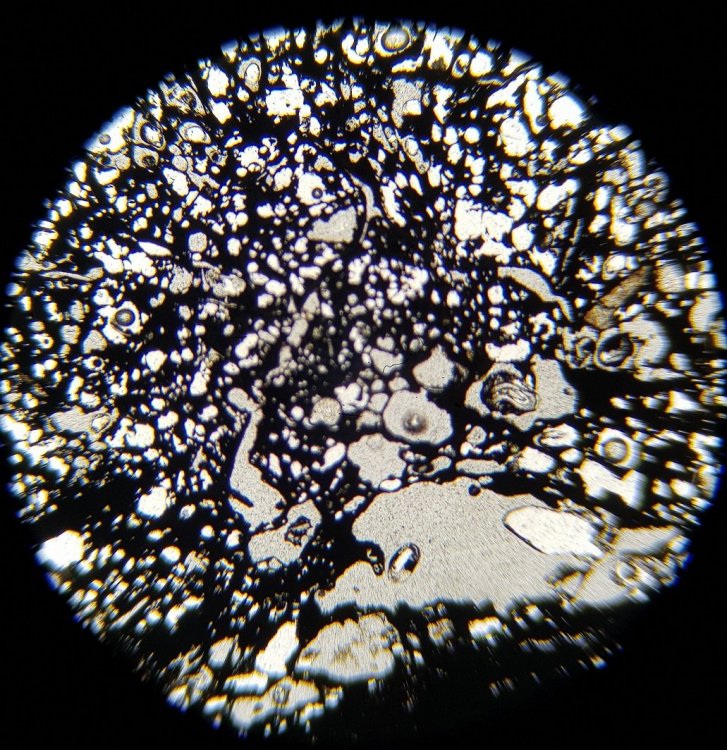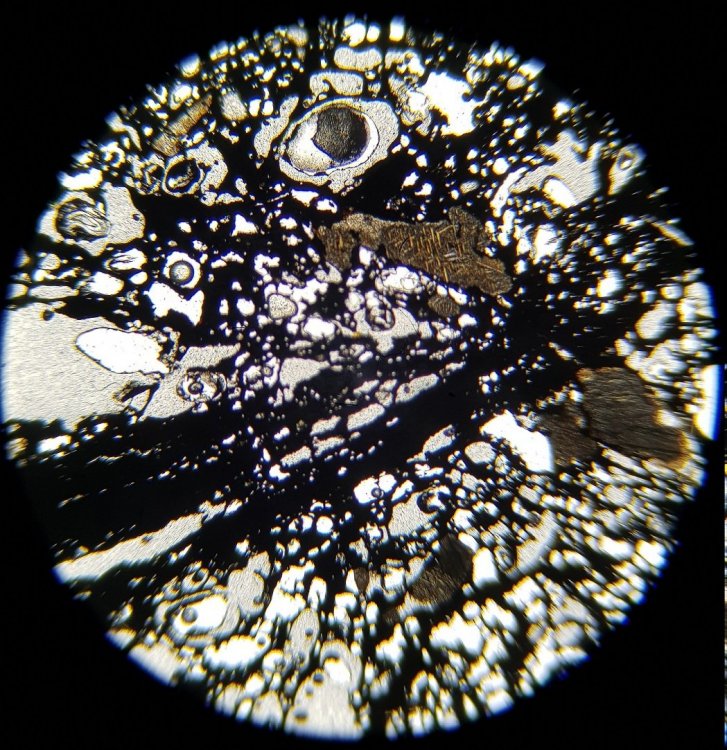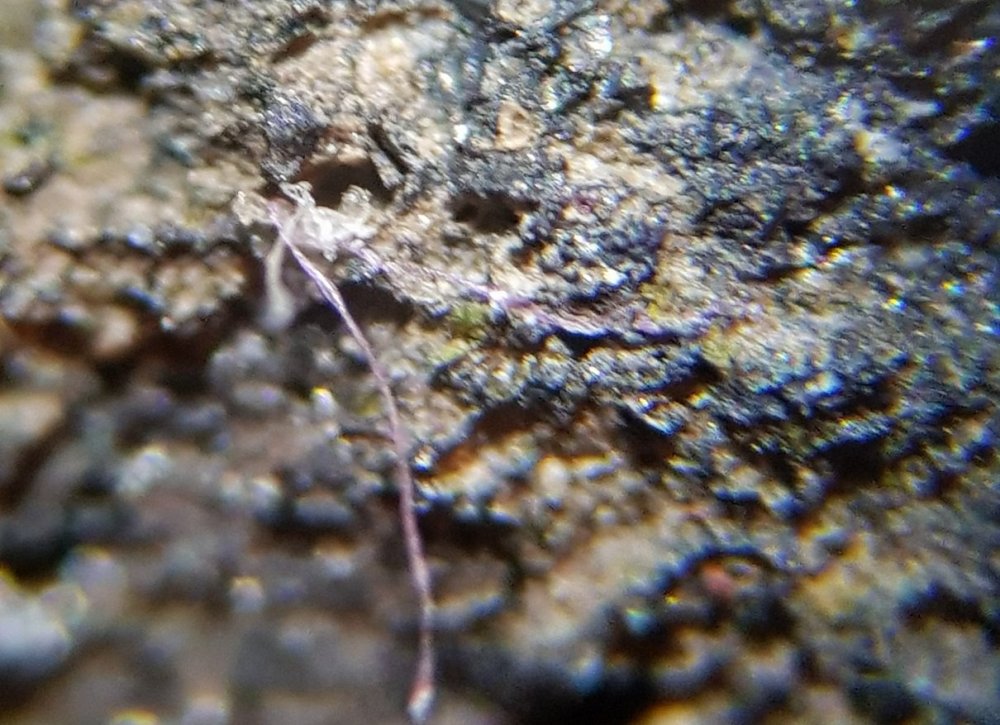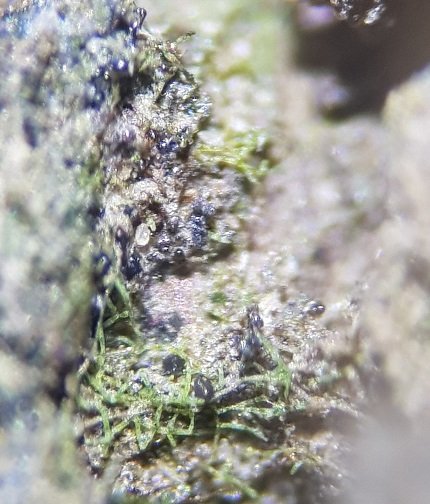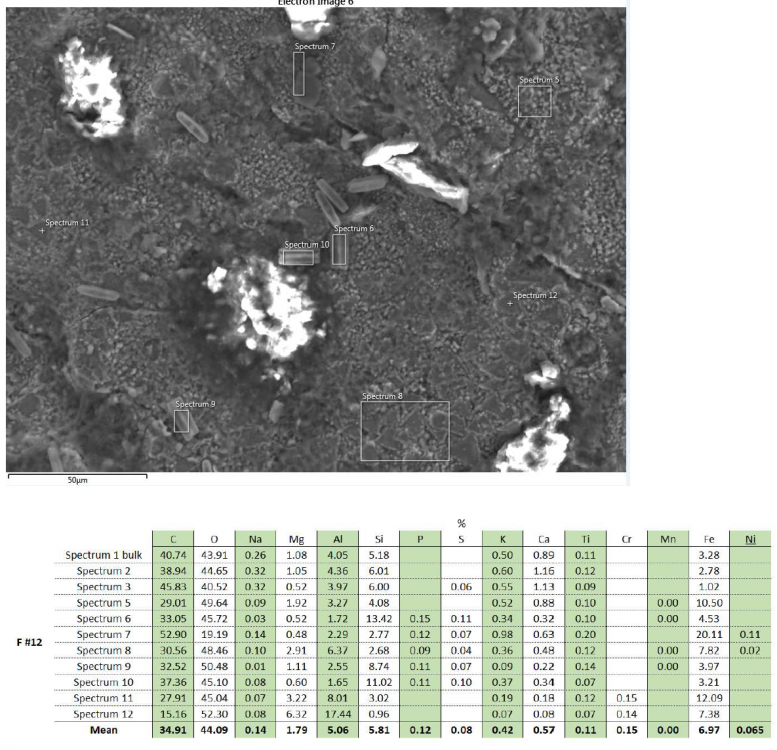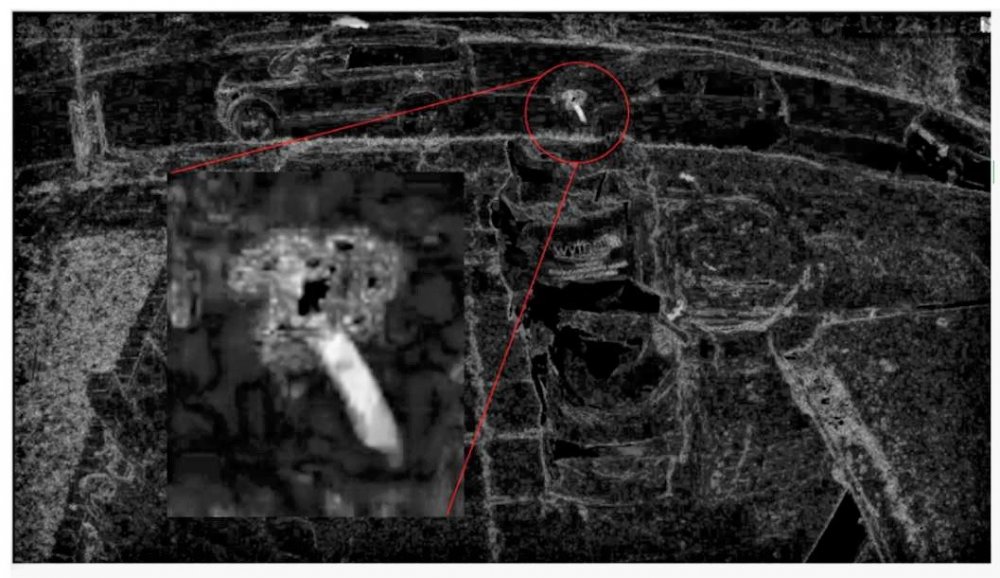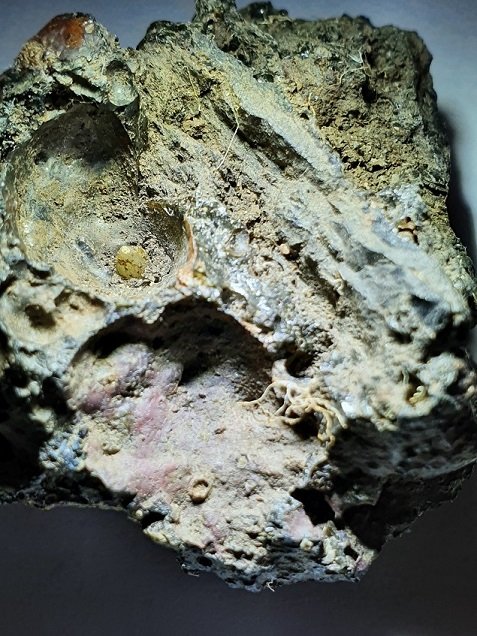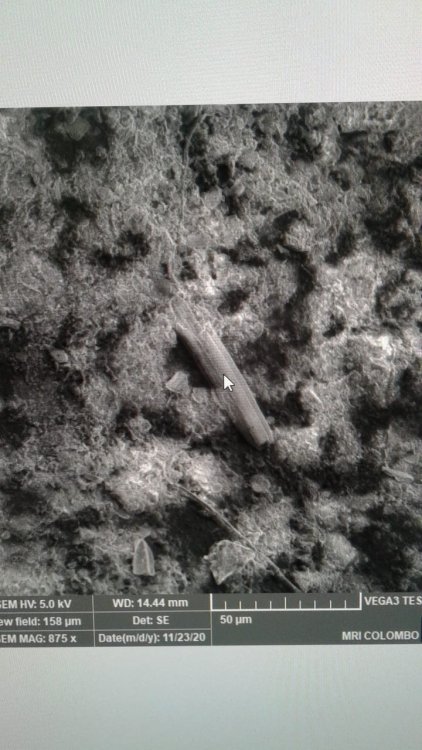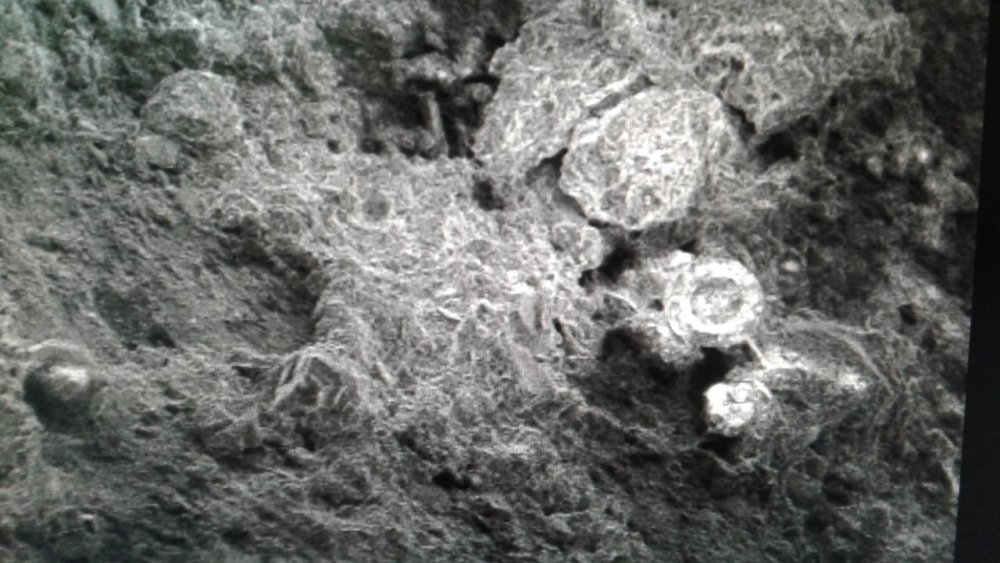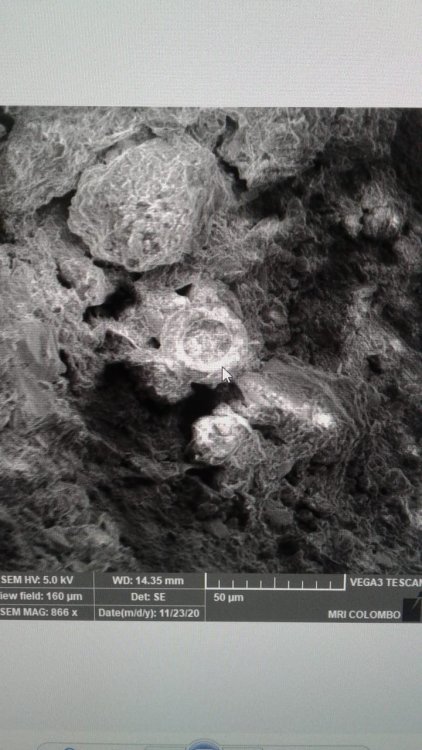

Bazil_SW
Members-
Posts
22 -
Joined
-
Last visited
Content Type
Profiles
Forums
Events
Everything posted by Bazil_SW
-
Hi all, The other day I was thinking about the electromagnetic spectrum and Nikola Tesla's famous quote.... "If you want to find the secrets of the universe, think in terms of energy, frequency and vibration.” If light is a wave, but has a particle that we perceive as 'physical', a photon, and gravity is a wave with a hypothetical graviton (yet to be found), might it be possible that all particles are actually the 'physical' representations of different frequencies of the EM spectrum? Looking at the EM spectrum, with shorter wavelengths (and higher frequencies), the smaller the 'items' seem to be, so if we go further to the right with ultra short wavelengths and very high frequencies, do we get the 'physical' particles we observe as quarks, muons, charms, electrons and the other (currently understood) fundamental particles? How might we test this hypothesis? Cheers! EM spectrum Image I was looking at is linked below (it won't allow me to attach any more pictures for some reason) https://www.google.com/url?sa=i&url=https%3A%2F%2Fcommons.wikimedia.org%2Fwiki%2FFile%3AEM_Spectrum_Properties_edit.svg&psig=AOvVaw3cD_g3zE8cBH6krutKyLSR&ust=1646315827797000&source=images&cd=vfe&ved=0CAsQjRxqFwoTCJC2rMPKp_YCFQAAAAAdAAAAABAD
-
Reply from the Ironbridge demolition company.... " I’ve been sent the email you sent our enquiries address, regarding the object falling onto your drive on the evening of 17th July. Whilst I’ll raise this issue with the demolition team at the Ironbridge power station, as far as I’m aware no works were being undertaken on this date which could have been responsible for the debris, indeed all works cease by 13.00 on a Saturday. Hope you mange to solve this mystery. Regards,"
-
It looks the Iron Bridge power plant is / was being demolished around that time (and still) so I've asked the company running it if anything happened on the 17th July 2020. As another angle, does anyone know how I could get the material radio carbon dated? I've tried a few private labs and they say they only take work from recognised institutions....
-
Your comment on the carbon burn up is reflected elsewhere also (Treasurenet post). From the video and taking some measurements outside, I estimate the fireball object object (term used in the very literal sense!) was travelling ~8 mph by the time it was in our frame. That's also corroborated by the timestamp on the other CCTV footage which was 0.1 miles away assuming both our timestamps are/were set from the internet (22:09:52 & 22:10:35). Something from an industrial accident I'd consider and did a search, but as mentioned, companies may not report them, or at least it may not make the news / be available online. I don't live 'near' anything that industrial, but Birmingham is very industrial - without giving away too much about where I live, the attached image would be my estimated 'corridor'. I'll scour the maps and do some research! https://i.imgur.com/JmWyib0.jpg Do you have a link to a video?
-
Before the petrographic analysis I approached an author of a paper on volcanic bombs and they confirmed 2 things at least: The material is compositionally different to volcanic material and certainly different to anything from Iceland. A piece weighing several 100 grams wouldn't travel that far. I also approached many academics from various fields, with little interest, most either didn't reply, or pointed me to the NHM London, who appear to be a sort of 'gatekeeper'. I suspect with the petrographic report, the response would be even more tepid, and that's why I asked them for the prefacing email, imaged in the linked post. No worries, I'm happy to share it all and answer any questions. Yes for sure I know it did - the answer is probably best served by looking at some reports I've put together over the last year or so (linked on dropbox, you might need to copy and paste them into the address bar it did not work in preview mode for some reason): Fragment #1: https://www.dropbox.com/s/sgdo7j02n4gonqw/Birmingham Fireball and Assumed Meteorite Fragments - Phase 1.pdf?dl=0 Other Fragments: https://www.dropbox.com/s/070n54kopcg0beg/Birmingham%20Fireball%20and%20Assumed%20Meteorite%20Fragments%20-%20Phase%202.pdf?dl=0 Density and relative magnetic attraction study: https://www.dropbox.com/s/gvt1jdvg0207bdi/Birmingham Fireball and Assumed Meteorite Fragments - Density and relative magnetic attraction study.pdf?dl=04 Bulk composition: https://www.dropbox.com/s/45uoj0zvify7nwu/Birmingham Fireball and Assume Meteorite - Bulk Compositional Analysis.pdf?dl=0
-
All suggestions welcome! The petrographic report was for the material only, I didn't mention about the biological structures until after when I had a video call to discuss the results - from experience it's better not to mention until after, if at all. The SEM images of the biological structures were taken at MRI Colombo (Sri Lanka), in Nov 2020, as I sent 2 fragments to the same team that did the initial work up on the Polonnaruwa stones that fell in Dec 2012. Sadly he was only able to get a few SEM images from fresh fracture faces, most of which are included in this forum already, before he was moved to head up the Covid testing lab as it hit hard and continues to. His initial reaction was that what we were seeing looked similar. That said, after analysis, the Polonnaruwa material has many characteristics akin to known meteorites, but mine does not appear to. I have seen various biological structures (diatoms, and filamentous etc) on fresh fractures under an optical microscope too. One fragment fell on a concrete drive (clean, i.e. not cover in moss etc) and was collected the next morning, not exposed to rain or moisture as it was dry and warm all evening - this is one of the two I sent to Sri Lanka for the study of the structures inside. (Fragment #1 image OP). The others were found resting on the top soil in the garden aligned to where they fell, so they had soil on the surface but I cleaned them up. Fragment #14 was the other of the two I sent to Sri Lanka: F #14 (hosted on imgur)
-
Sadly the Natural History Museam (London) were not able to further this investigation, so it has stalled and I think it's as far as I can take it. I'd like to preface my reasoning for pursuing it even this far, with a series of logical statements: - did the material fall from the sky = YES - is it unusual and have strange surface features = YES - did it fall at the start the Perseids shower (caused by the debris field of comet Swift-Tuttle) = YES - are there any confirmed cometary meteorites in the collections = NO - does the material contain microbiology = YES apparently undamaged diatoms and other structures are embedded deep inside the fragments and within the material matrix - has this happened before = YES, reference Polonnaruwa stones 2012 (though these findings are not universally accepted) The investigations to date (SEM, EDX, EDX & XRPD, EDX & petrographic) were not able identify characteristics akin to existing meteorites, nor any of the expected characteristics of meteoritic materials, but it still remains unidentified. I have not been able to confirm the age or origin of the material by analysis such as Triple Oxygen Isotope, Cosmic Ray Exposure (as these are highly specialized), or even if it has a 'terrestrial' age by carbon dating. The prevailing theme is that that the material is anthropogenic, and possibly the remnents of an artificial satellite that have fallen back to earth. That might explain the: - observable differences between adjoining fragments (perhaps different components?) - some of the odd biological looking structures found on the outside (perhaps something collected from the atmosphere?) However that does not answer anything relating to the intact biologicial structures found inside the material. The anonymized petrographic report is uploaded in post #16 here: Treasurenet Forum Post, because there is no capacity to add more files to this post. To be clear, I'm not claiming that this material is one thing or another, instead putting it, and what I have found, out there for posterity and open discussion.
-
We had both bay windows open in the bedroom and just after we'd gone to bed we heard an odd moderately loud noise that lasted 3-4s and had pronounced Doppler shift. It was a warbling whine with an underlying hum, like machinery or electricity discharging rapidly. We could tell it was in the air rather than on the road outside. In the morning I checked the CCTV, sadly it doesn't record sound, and found the footage posted above, albeit at full speed. In it I saw a piece bounce off the house so opened the front door a small brown black piece of unusual rock, roughly 12mm across was just sitting there on the drive. It had a pungent burnt smell. Looking at the footage I followed it's path back and found the witness mark on the wall where it had ricocheted off the house. Initially I'd assumed the fireball was travelling left --> right parallel to the road so only checked people's CCTV along the street (which is pretty straight anyway) and only found the one other footage. At the time I'd not appreciated we were seeing a reflection of the fireball on the house and trees in their footage. It wasn't until 6 or 7 weeks later my friend analysed our footage frame-by-frame and created the above composit (see OP) that shows the object breaking apart right outside the house. I cut the bushes back and found loads more fragments resting on the top soil. From the footage and fragments fall area I've estimated trajectory and approx. incident angle. The trajectory estimate as just off N --> S such that if you extend out it would intersect the middle of Iceland (hence the question could it be volcanic), and incident angle ~27degrees. The other footage was taken from 0.1 miles away, so that would indicate the fireball was at ~80-90m altitude as it passed over and behind their house. Regarding the fanfair of the Winchombe event, I can't really comment why, if it is indeed a meteorite fall, more people didn't see/hear/record it. I also don't consider that, on its own, rules it out either - the universe is a big place full of oddities, and we're still discovering stuff every day!
-
Something I forgot in the OP (there's so much!) was some oddities in a surface pocket of a fragment found in the garden. They glinted in the light, at first I thought they were gold, but when I extracted them they structurally lost shape. SEM and EDX composition results show they're possibly biological? Maybe interesting that there's no detectable nitrogen here either.
-
Hello All, I live in Birmingham, UK. For the last year I've been investigating some unusual rocky material that fell from the sky as a fireball on 17th July 2020. We heard it happen and 2 CCTV caught it. The material is highly carbonaceous, low density (typ <1g/cm3), porous, and black on the inside, brown on the outside. I've found the outside turns brown when cooling from red hot temperatures, by the formation of brown crystals. It appears to contain a number of metamorphic assemblies such as Kyanite and Muscovite, possibly Epidote, and the bulk composition is as below. I've had a petrographic analysis done, some images below, but the general findings to date are: - meteorite: The material has some meteoritic characteristics, but can not be a matched to any existing sample in the collections. (Interestingly though it fell at the start of the Perseids and there are no confirmed cometary meteorites to compare it to) - industrial waste / slag: confirmed by several academic experts of such materials that it's not - volcanic: confirmed by several academic experts of such materials that it's not - other: TBC, one suggestion was a piece of burned/altered artificial satellite that fell to earth The further the investigation, I'd really like to to determine its ultimate origin and have been trying for: - Triple oxygen isotope analysis - Cosmic Ray Exposure analysis - Radiocarbon or other suitable material dating analysis With little joy. Does anyone know who might be able to help with any of these? In the UK, or anywhere in the world? I have lots more images and info to share if needed. Cheers! ---------------------------------------------------- Some images and details for context Some of the larger fragments ---------------------------------------------------- Outside turns brown on cooling from red hot temperatures ---------------------------------------------------- Close up of some surface crystals and a really odd feature, not seen to change over time Close up of the first piece picked up the next morning, and some of the unusual features on it White mushroom-like structures - numerous on the surface Maroon Spheres - also numerous on the surface Glassy extrusions and structures ---------------------------------------------------- Possible Kyanaite and Muscrovite ---------------------------------------------------- Bulk Composition ---------------------------------------------------- Some thin slice images, 10x objective + 16x eyepiece Some of the characteristics the petrographic analysis determined as 'meteorite-like' was the presence of chondrules, but these were found to be empty and expected to be filled with olivine, serpentine and other Mg-Fe silicates. They also commented on the angular cooling textures (maybe Widmanstatten pattern?) observed and that cooling textures like these are observed in meteorites. however, they are formed in metal alloys, rather than silicates.
-
Yes I'm leaning that way. I'll send the 2 Drs mentioned in the article an email, but again it sounds like a very specialized process, rather than something that can be bought 'over-the-counter'. I'm hoping to get a radiocarbon dating, as more the conventional method, but even that is proving difficult, and whilst it might not work for very old stuff, if they can get a date from it at all, that tells me something (that it's almost certainly of terrestrial origin).
-
Aye, Birmingham, UK. That was a very interesting event but it took place about 7 months later. Relatively speaking, it was an 'easy' win for the experts because the fireball was captured by a lot of cameras (UK Mon and general 'civilians') and pieces were found quickly afterwards and 'easily' confirmed as meteoritic chondrite, ableit a rare type - it ticked all the boxes. The difficulty I've had, is my stuff doesn't! This team have an interesting piece of it (www.eaaro.org.uk) and when I spoke to their director about a month ago, he was really keen to investigate a chunk of my material, but I've not heard back since.
-
Yes, I hit the limit! Thanks for sharing and the shout out. I've not read it all yet, but I remember the over / undershoot element from playing Frontier Elite on my Amiga 600 in the 90s 😂 The idea a body could pass through the atmosphere, collect some biological material, then land somewhere else is one mechanism proposed for panspermia - there was an article about it earlier this year or later last, particularly in reference to Venus, I recall. The answer to that is nuanced. I don't plan to name drop, but yes since very early on I've been liaising with a few retired Professors in the fields of panspermia, astro and microbiology, and based on: the circumstances of its arrival and that UK Mon also link 2 other fireball sightings to my report (so there is corroborating evidence that something fell from the sky that night) the unusual nature of the material (in particular its structure and low density) which is similar to material previously studied by those people and demonstrated (but not widely accepted) to be extraterrestrial, likely cometary, in nature surface features which could suggest 'collected' biological structures from the atmosphere, also previously studied by those people and what has been found inside, also similar to that studied previously by those people and demonstrated (but not widely accepted) to be extraterrestrial The suggestion has been that it's from out there somewhere, or at the very least has passed through the atmosphere. I've approached several currently active academic geologists/volcanic and many meteorite experts, and to date none have performed analytical analysis on the material, and only one (academic meteorite expert) has had a cursory glance at it under an optical microscope. Their replies, based usually on pictures only, are the material is probably slag or industrial waste, but I have it from numerous academic experts (currently active) in those fields that it's not and that particularly microbiology, like diatoms, would be destroyed in the production of such materials, and would not be present as they have been found. As I have gained more information through my own privately funded analyses, two things have happened: it's become more unusual, but also more unlike any existing meteorite, which has succeeded in strengthening the argument from the (many) meteorite experts I've approached, though a few do admit the material is unusual. One specifically commented that seeing Kyanite & Muscovite (metamorphic assemblies) on something with such low density (typ. <1 g/cm3) is certainly unusual. I've tried a few avenues for analysis that can confirm the origin, namely Triple oxygen isotope and Cosmic Ray Exposure but these are very specialised and the keys to those kingdoms are, it seems, held by the meteorite experts. I am also trying to source radiocarbon dating in parallel, I've tried a few places with little joy, anyone know a company, UK or US or anywhere? It being extraterrestrial (maybe cometary?) material is still my working hypothesis, primarily because it currently doesn't fit other boxes either - but I will follow the evidence. One suggestion, by the petrographic team, is that this could the burned/altered remains of part of an artificial satellite that re-entered, which might explain the 'collected' materials and lack of similarity to meteorites. They suggested it based on the very high carbon content and that it might have started life as something made from graphite. I am not sure if that explains the biological elements inside it, or the apparent metamorphic assemblies that have been observed, though. In any case all of the above is why I'm now looking at what information can be gained from the biological element(s).
-
Thanks for the link, I am fully aware of what slag is. I have the material, and spent a lot of time analysing it, the density typ. <1 g/cm3 (slags are >2), when you compare slags from different parts of the UK (physical pieces I have collected on my travels), this is nothing alike when you hold it in your hand. It's not slag or industrial wastes for all the reasons and analysis already mentioned in previous posts. This conversation was intended to focus on the biological structures and surface oddities (biological?) that have been found, it's input on that aspect I am curious about from this forum.
-
Case closed then! .... If only that explanation satisfied the evidence. Most of them only saw pictures not the actual stuff, so it would be easy to say, so really that sentance should read "the reply is always either" 😉 . And that does not explain the oddities observed in the pictures in this thread
-
That's right, I've kept the (possible) fossils & biology out of the discussions with the meteorite experts, the Natural History Museum (London), and anyone else I've approached about the 'nature' of the material, and believe you me I have approached a lot of people over the last year, from all over the world. The answer is always either: 'it's slag' or 'that's interesting, but not a meteorite, probably some sort of industrial waste', or some variant on that theme, so I have paid for several analyses myself to try and better understand the material. To date, - SEM study at Warwick Uni to get an overall feel for the material's elemental composition at the surface (and to confirm several of the larger pieces were actually the same thing). Interestingly they took SEM and EDX results for some diatoms on the inside of a smooth feature which appears to consist of Kyanite & Muscovite (both metormorphic assemblies). It may be interesting to note that the diatoms do not contain (measureable) amounts of Nitrogen: - Bulk composition by EDX and XRPD as below: - Thin slice petrographic analysis: short version is, the material has some meteoritic characteristics though there is always a 'but' when compared to existing carbonaceous chondrites (and others) as it's not comparable. They could not conclude what it actually is, industrial waste or otherwise. Interestingly though it fell at the start of the Perseids shower (which caused by the debris field of comet Switf-Tuttle) and there are no confirmed cometary meteorites in the collection to compare it - at least that has been one of my arguments. That and the fact it fell out of the sky! Since I have gotten little traction with the materials side of it, I thought I would approach it from the other (biology) side, hence this post.
-
😂 Aye, I know, I was more than a little alarmed when I started studying it and the glassy sphere thing burst! I also suspect the biological structures on the outside were collected 'on the way in' and have discussed the possibility with some local (retired) Professors from Sheffield & Cardiff who researched biological structures in the upper atmosphere. Yes, I remember the Allan Hills announcements in the 90s and the controversy it caused, certainly one of the structures I've found inside looks very similar. I'm also aware of the Polonnaruwa stones that fell in Sri Lanka 2012 and the (controversial) findings there. I've really struggled to get the materials investigated by any meteorite or biology experts because it does not look like a typical meteorite, do you know who I could approach about it?
-
Hello all, I live in Birmingham, UK. At 10pm on 17th July 2020 an aerial fireball object fell from the sky, broke apart near our house, and showered rocky fragments on the garden and drive. We heard it happen and 2 CCTV caught it. I've been finding more pieces since, and have had quite a bit of analysis done on it, including SEM & EDX, petrographic, and bulk composition, and still don't know what the material is! Can anyone weigh in what the odd biological structures are that I'm seeing on/inside some peices, several images below? I have loads more details to share if anyone wants more! Any help is greatly appriciated. Cheers! ------------------------------------------------------------------ Some more general information for context CCTV video hosted on imgur. Ours slowed: https://i.imgur.com/WRx4eno.mp4, the other from 0.1 miles away captures a reflection of the fireball in the sky: https://i.imgur.com/21GvZaD.mp4 Composit image of the differences per frame of our CCTV shows the object breaking apart: The object partially assembled: ------------------------------------------------------------------ Really Odd Surface Features One particular fragment that was seen to bounce off the house in the footage was found the next morning (<12hrs later), still smelt burnt like hot road tar, and was not exposed to water/rain/noistures, has really odd features on the surface, does any know what these are? - the 'critters' (for want of a better word!) with appendiges- also numerous and apparently 'splattered', mashed, or burst open, on the surface and in the pockets? - the white mushroom-like structures - numerous on the surface and about ~0.2mm dia. - the glassy spheres with longitudinal ridges that have been seen to 'burst' open - numerous on the surface + ------------------------------------------------------------------ Large Structure Recently I found a largish piece about 1.5" across, that has an odd biological looking structure on it, which is rubbery and bendy in texture, and has been seen to change over time, images attached, Any ides what this is? ------------------------------------------------------------------ The material also contains (apparently) embedded microbiology, such as diatoms and others, on fresh fracture faces, a few of many images attached. Unfortunately the images are not great quality. This is the fragment found on the drive the next morning. Diatoms: Ring-like structure: + Filamentious structure: Others (acritarchs?):






